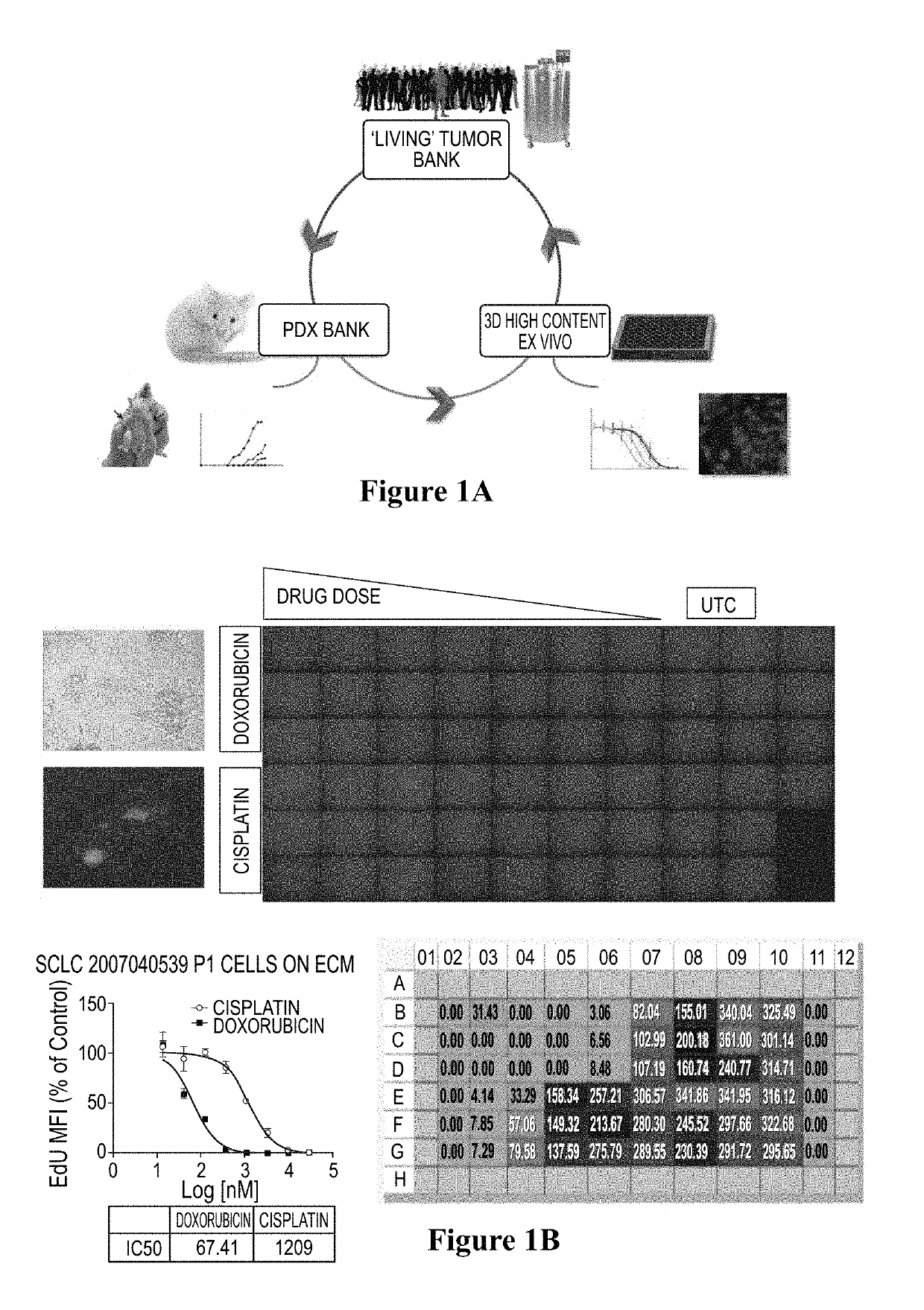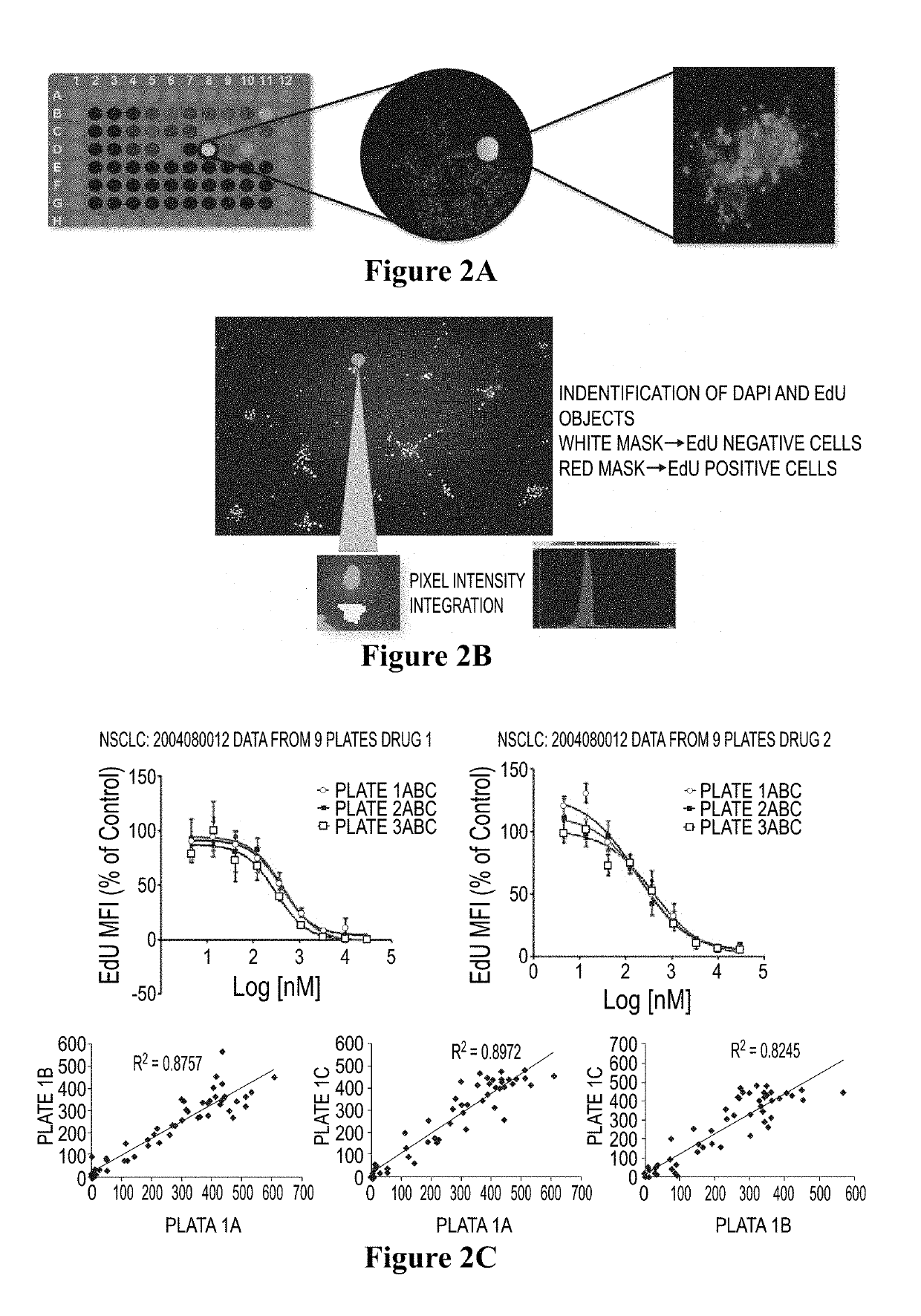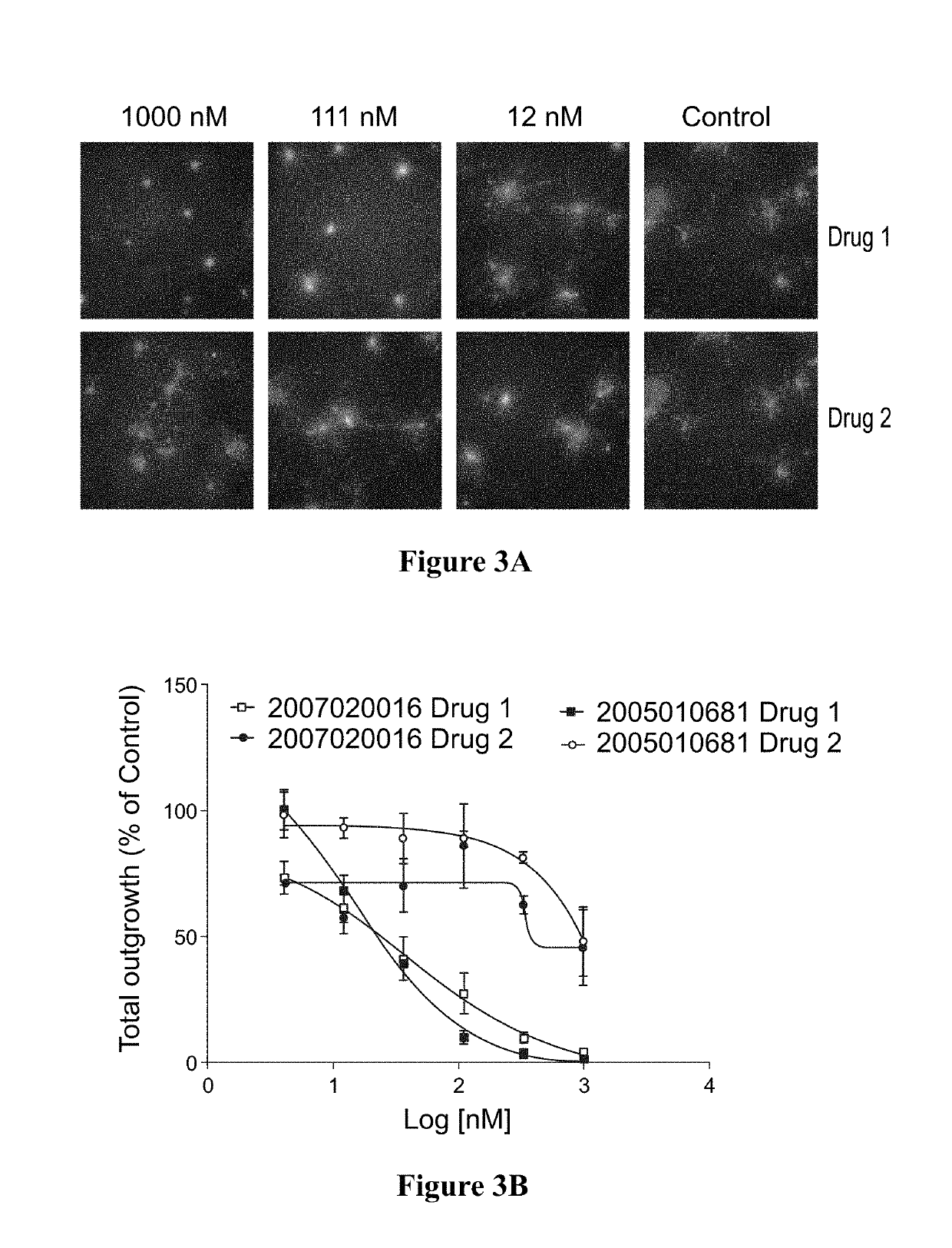3D cell culture and ex vivo drug testing methods
a cell culture and ex vivo technology, applied in the field of 3d cell culture technology in methods for ex vivo drug testing, can solve the problems of poor reproducibility and stability of 3d cell culture techniques, inability to accurately represent the real 3d world in disease progression, drug testing and/or biochemical and physiological research, and the current limitations of conventional 2d (2-dimensional) cell culture methods, etc., to achieve the effect of optimizing the labeling
- Summary
- Abstract
- Description
- Claims
- Application Information
AI Technical Summary
Benefits of technology
Problems solved by technology
Method used
Image
Examples
example 1
[0068]Patient-derived tumor cells were allowed to thaw in 37° C. water bath until frozen cell suspension melts enough to form a slushy solution. The cell suspension was slowly transferred through a cell strainer to a 50 ml conical tube filled with conditioning media warmed to 37° C. Cells were pelleted by spinning the tubes at 800 RPM for 5 minutes at 4° C. The supernatant was carefully removed without disturbing the pellet by aspiration of the supernatant. The pellet was resuspended in 1-2 ml warmed conditioning medium. Cells were counted using TC10. 10 μl of the cell suspension was removed and transferred into a tube for Trypan Blue exclusion assay to assess the cell density and overall health of the cells in the vial. LIVE-DEAD cells were counted.
[0069]6-well plates were coated with Cultrex® (ECM from Trevigen). ECM was diluted 1:20 with ice cold conditioning medium without growth factors and supplements. 1 ml per well of 6-well plate or 3 ml per 100 mm...
example 2
Use of Patient-Derived Xenografts (PDX)
[0080]Fresh or banked patient-derived tumor cells were injected into immunocompromised mice. Cells were harvested and plated to form spheroids. Spheroids were subjected to ex vivo drug treatment using chemotherapy drug candidates, cisplatin and doxorubicin. Cell proliferation was measured by HC imaging by EdU incorporation assay. (FIG. 1A-B)
[0081]Cell images are captured and processed using multiple algorithms corresponding to the experiment. DAPI was selected on channel 1 to identify valid objects. EdU was selected on channel 2 to identify a population of cells incorporating DNA. Intensity for each pixel for each channel was recorded and integrated to obtain total intensity. Total intensity was divided by total pixels to give mean fluorescent intensity (MFI) for that channel. Integrated mean fluorescent intensity of multiple cells divided by total cells per well gave mean of MFI. To normalize the variability of cell numbers between wells, the ...
PUM
| Property | Measurement | Unit |
|---|---|---|
| molecular weight | aaaaa | aaaaa |
| molecular weight | aaaaa | aaaaa |
| molecular weight | aaaaa | aaaaa |
Abstract
Description
Claims
Application Information
 Login to View More
Login to View More - R&D
- Intellectual Property
- Life Sciences
- Materials
- Tech Scout
- Unparalleled Data Quality
- Higher Quality Content
- 60% Fewer Hallucinations
Browse by: Latest US Patents, China's latest patents, Technical Efficacy Thesaurus, Application Domain, Technology Topic, Popular Technical Reports.
© 2025 PatSnap. All rights reserved.Legal|Privacy policy|Modern Slavery Act Transparency Statement|Sitemap|About US| Contact US: help@patsnap.com



